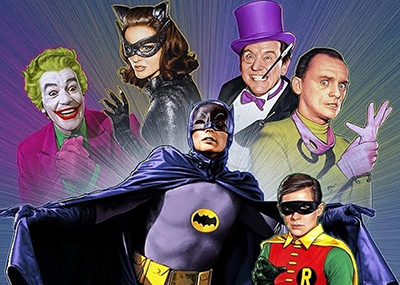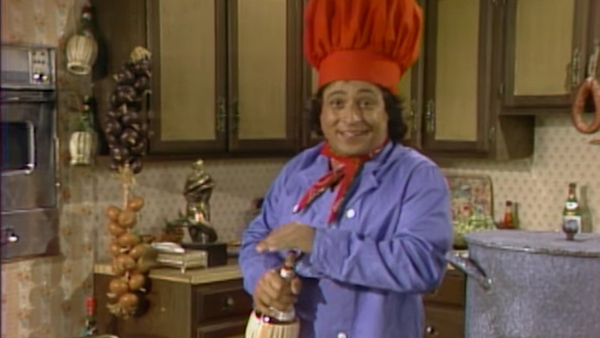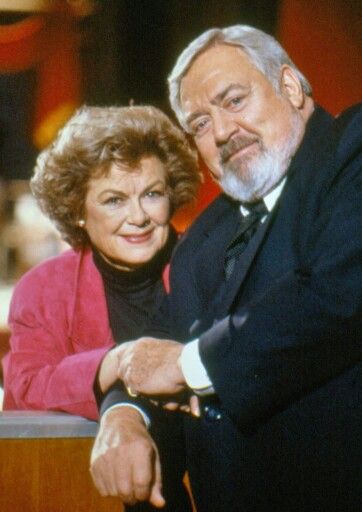Dick Locher passed away last week.
As many of you know, I worked with Dick from 1983 until 1992, having taken over the writing of the Dick Tracy strip from Chester Gould in 1977, working first with Chet’s last assistant, Rick Fletcher. My relationship with Fletcher was occasionally rocky, due to my continuing friendship with Chet after Rick fell out with his former boss and father figure. But we did some very good work together.
I felt privileged to work with Locher, another former Gould assistant – one who went on to be a Pulitzer Prize-winning political cartoonist. Our relationship was generally a positive one, and we were friendly, though never really close. We lost contact when I was fired from the strip and I was somewhat resentful that he had not gone to bat for me. In my incredibly biased opinion, the strip under Dick never recovered from my exit.
A few years ago I joined Dick at Woodstock, Illinois (Gould’s home city), for the screening of a Tracy documentary we were both a part of. We re-bonded very nicely and any bumps in our past road was smoothed. It became clear he was equally unhappy with the editor who’d fired me, but as a company man he’d kept that to himself. We stayed in touch and exchanged e-mails, artwork and books. It was a nice way for our collaboration to evolve into a professional friendship.
The Tribune did a nice write-up about him, but I’m too petty to give you a link, because the Trib has conveniently written me out of Dick Tracy’s history. So I’ll give you this nice link instead.
Here’s one last fond fedora tip to my partner Dick Locher.
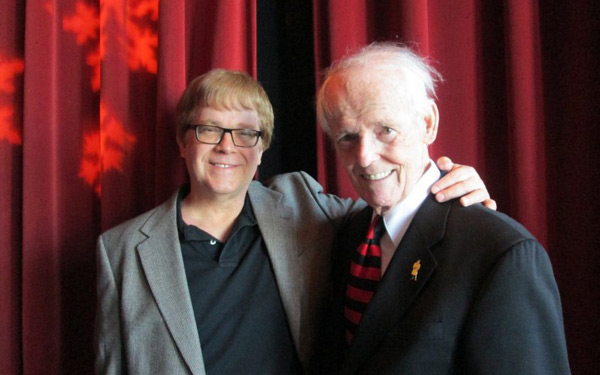
I think I’ve quoted this before, but where Tracy is concerned I often recall what Dean Martin reportedly said about Jerry Lewis: “The two best things that ever happened to me were meeting Jerry Lewis, and splitting with Jerry Lewis.”
I hated getting fired off Dick Tracy. I felt I had revitalized the strip. Friends, like Mike Gold, told me I should only do ten years, since it wasn’t my creation, and Chet Gould himself advised me not to let Tracy dominate my career, since he would always be the creator.
But Tracy was my childhood obsession and I would be still be writing it, had I not been fired by an editor who despised me almost as much as I despised him.
And yet, just as getting Tracy was the best thing that happened in my early career, losing it was the other “best thing.” Road to Perdition came about because I was scrambling to find a new comics project. The dust had barely settled on my Tracy firing when Andrew Helfer approached me to create a noir graphic novel for DC. Off the top of my head I pitched Gun and Son (which became Perdition), combining my love for Lone Wolf and Cub with the real-life story of John and Connor Looney and a betrayed lieutenant in Rock Island’s mob scene of the early 20th Century. The latter had been something I ran across researching my novel True Detective but couldn’t find a way to use, except in passing.
The rest, as they say, is history. No Tracy firing, almost certainly no Road to Perdition. For a lot of years, the famous thing I was known for was Tracy. Now the strip has receded into something of an interesting footnote and “author of Road to Perdition” is the famous thing.
I am leading up here to a wonderful review by that talented writer Ron Fortier about my prose novel version of Road to Perdition. You need to read this review, and if you have not yet purchased for your reading pleasure and edification the Brash Books edition of the complete version of the novel, what are you waiting for?
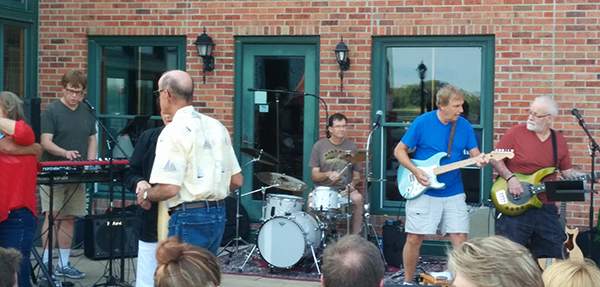
Yesterday Crusin’ performed for a late afternoon concert on the patio at Pearl City Plaza in Muscatine.
It could have been a nightmare. A couple of weeks ago our guitarist walked out on the band at rehearsal and I had a very limited time to decide whether to cancel our remaining two gigs of the year, or find a replacement.
My way is not to roll over and die, however, and with the recommendation of our drummer, Steve Kundel, I approached a well-known area musician, Bill Anson, to fill in. We rehearsed four times, one of them a marathon session, and Bill proved to be a great guy as well as a skilled, gifted guitarist/singer. What we do is not really his genre of choice, but I am hopeful he will stick around for a while. (I have offered him the position of Permanent Temporary Guitarist, perhaps channeling “Permanent Latrine Orderly” from No Time for Sergeants.)
How did the gig go? The audience was large and appreciative, and while there were occasional train wrecks, there were also no fatalities, and I can say in all honesty I haven’t had a better, looser time on a band job in years.
Thanks, Bill. And thanks to Brian Van Winkle, our bassist extraordinaire, for sticking with us in a sticky personal situation.
We play at least one more time this year, at Ardon Creek Winery on September 1, 6 to 9 pm. It’s a wonderful outdoor venue. Check it out, if you’re in the area.
Here’s a lovely piece on the Quarry TV series.
Here’s a nice write-up on the new Bibliomysteries collection that includes “It’s in the Book” by Mickey and me – my favorite of the Hammer short stories.
Scroll down and read nice things about the forthcoming Quarry’s Climax.
M.A.C.
